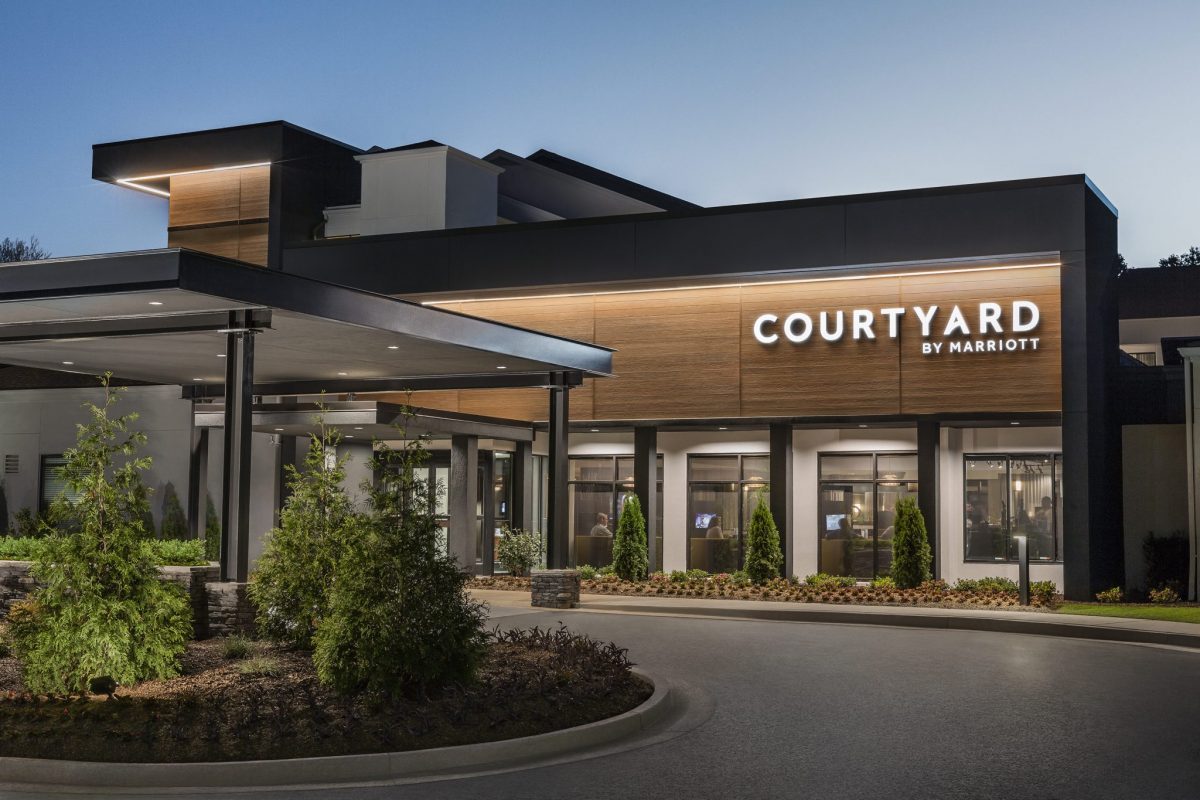Skift Take
Just because Marriott sees more growth opportunity abroad doesn’t mean it will neglect its reliable staples in the U.S. But a successful brand refresh like Courtyard’s hinges on sticking to timelines (or speeding those up).
Marriott’s Courtyard Hotels has managed to stay the hotel company’s second largest fee-generating brand without a whole lot of tweaking over the years. But executives, seeing the growing competition coming in upscale roadside hotels, know that it is high time for a makeover in the U.S. for its nearly 40-year-old brand.
A plan was announced Wednesday by Marriott that will go way beyond just fresh coats of paint.
The modernization push comes months after IHG announced it was implementing a quality check initiative at 200 Holiday Inn and Crowne Plaza hotels. Choice Hotels underwent a massive brand transformation for its Comfort brand while also chasing more upscale clients with other brands like Cambria. BWH Hotel Group, Best Western’s parent company, also moved in recent years to pursue higher-end clientele.
More than 375 Courtyard by Marriott hotels across North America — roughly 36 percent of the brand’s continental footprint — will get an exterior refresh by 2024, the company announced. The owners of many of those properties are also tying the exterior work to interior renovations of public spaces and guest rooms.
Property owners already renovated more than 60 properties — a quicker pace than what has happened at Sheraton, which had a brand overhaul announced in 2018 and took until early this year to debut six hotels with the new look.
But this is about more than fresh paint jobs and new lights out front. Courtyard is a brand that has been around since the 1980s targeting the so-called road warrior segment of business travelers. But the decades since its launch has seen the arrival of countless competitors, pushing a brand like Courtyard to target a higher end of its original customer base as well as some leisure travel.
“Courtyard was the first hotel brand designed specifically for business travelers and our brand has evolved to also cater to experienced leisure travelers,” Diane Mayer, Marriott’s vice president and global brand leader of classic select brands said via email to Skift ahead of the announcement. “Our renovation strategy and continued guest experience enhancements ensure that our hotels stand out within the upscale select service segment.”
Being first also means some properties need more of a refresh. The hotels targeted in the wave of modernization were generally built between 1983 and 2002. Discussions for this North American branding overhaul for Courtyard began in 2017 with the new standard released to owners the following year.
Further Reading
Exterior renovations should take three to six months for construction, which is estimated to cost an owner between $750,000 and more than $1.3 million depending on the size of the hotel. The refreshed exterior plan calls for a new building façade, signage, redesigned porte-cochere, landscaping, and a fresh paint job.
Interior renovation costs to public spaces and guest rooms are “incremental to this,” Mayer said without elaborating further.
Marriott declined to make Mayer available for a phone interview and only took questions via email.
While a specific price tag wasn’t provided for the interior work, some of those changes include a modernized lobby, new fitness center, “versatile” meeting spaces, and enhanced food and beverage offerings. Guest room enhancements include digital key technology and new furnishings.
A brand refresh may not seem all the groundbreaking, but it is indicative of how competitive Courtyard’s market segment has become since the brand first launched in the early 1980s.
Newer, rapidly growing brands to Courtyard’s upscale select-service segment include CitizenM, which has a $1 billion expansion plan.
Marriott has a “17 or 18 percent” market share in the U.S. and Canada while it’s at only 4 percent internationally, company CEO Anthony Capuano earlier this month at a Morgan Stanley consumer conference. Numbers like that show the company has more opportunity to beef up its presence abroad, and more than 60 percent of the company’s development pipeline is for international hotels.
But the Courtyard refresh shows the company isn’t ignoring its domestic customers, either.
Rapid Redesign
Three years to completion is a fast timeline for a Courtyard brand refresh, even if these are smaller hotels than Marriott’s typical Sheraton.
The Sheraton redesign has garnered plenty of criticism since it was first announced in 2018. But Courtyard’s brand identity is a bit clearer in that it is at the higher end of the no-frills market segment of hotels typically targeting road warriors.
Sheraton is widely seen as a brand that has lost its way over the years and doesn’t have a clear purpose. It may have some of the best global reach of any Marriott brand, but it also has a disjointed feel. Properties in Asia have an ultra-luxury feel while some of those in the U.S. can drive potential guests to the next highway off ramp in favor of a Courtyard.
Marriott leaders previously chalked this up to Starwood Hotels & Resorts, which Marriott acquired in 2016, not having the courage to kick out underperforming Sheraton hotels. Marriott previously defended its Sheraton redesign, saying it is moving at the same pace as the brand refresh announced at Marriott Hotels in 2012.
Mayer declined to draw a connection between the Courtyard refresh and the Sheraton one, instead focusing on the pace of the more recently announced modernization push.
“Guests can already experience the new public space and guest room design, as our hotels have an ongoing seven-year renovation cycle,” she wrote.
Have a confidential tip for Skift? Get in touch
